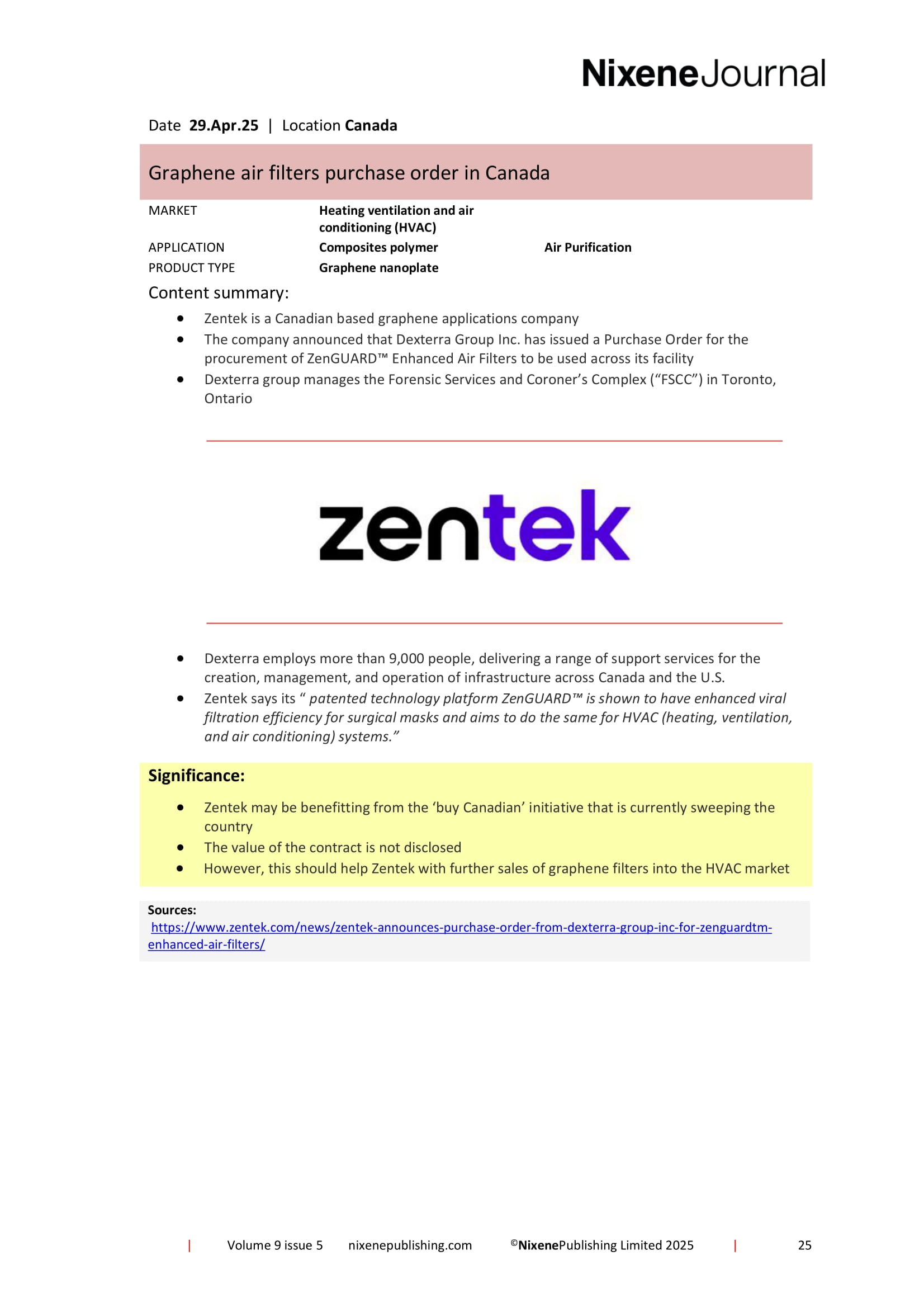Journals
This product is relevant to the following:
Material:
Other:
, ,Locations:
Markets:
Applications:
Product Types:
Technologies:
Related products
-
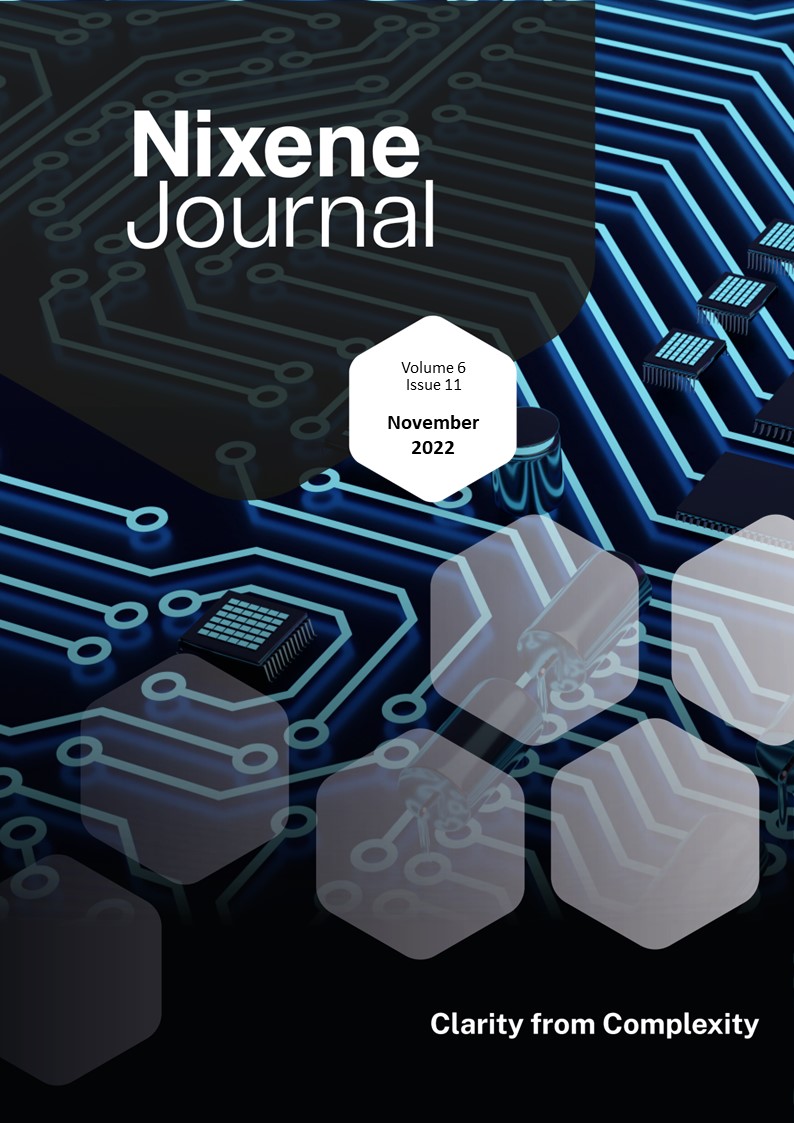
Vol 6 Issue 11
This month we performed our own analysis of the world-wide graphene research trends between 2004 and 2021. This examined the number of research papers produced by the academic community each year. We found that ‘peak graphene research’ occurred in 2018 with a maximum of over 300,000 scholarly articles produced in one year. That number has declined by about a third in the years leading up to 2021 and there are now around 100,000 articles produced by the global academic community each year. The trend charts in the special feature of this issue reveal what we found in more detail. It makes for fascinating reading and will give you an insight into how we curate each issue of this journal. The research we have highlighted this month includes work done by a team at Chongqing University, China who have discovered a way of improving the efficiency of the chemical vapour deposition (CVD) process for making graphene. By using a special catalyst, they can lower the furnace temperatures by 300°C. Other work by researchers at the University of Manchester, UK has found a potentially efficient way of splitting water into hydrogen gas using proton permeable graphene membranes. They can also measure the proton current moving across the graphene membrane. Understanding proton currents could help design better hydrogen fuel cells and even help design better ways of generating fuel for a future hydrogen economy. There are interesting developments on the industrial and commercial side this month. In Australia, the Graphene Manufacturing Group has done something with battery technology that we rarely see. They have made big improvements in energy density. This is a very hard thing to do with lithium-ion batteries. GMG has developed a new technology; graphene-aluminium-ion batteries and they are making continuous improvements, we are impressed. Another new technology caught our attention. First Graphene is helping develop a prototype module that can be retrofitted to natural gas boilers. The technology is graphene enabled, improves the efficiency by 20 to 30% and at the same time achieves 98-99% reduction in boiler emissions. This is at the prototype stage now. We wish the company well developing this technology. As usual dear reader, this is just the tip of the mountain, please explore the landscape we have curated for you this month by reading on… Adrian Nixon 1st November 2022£45.00 View product -
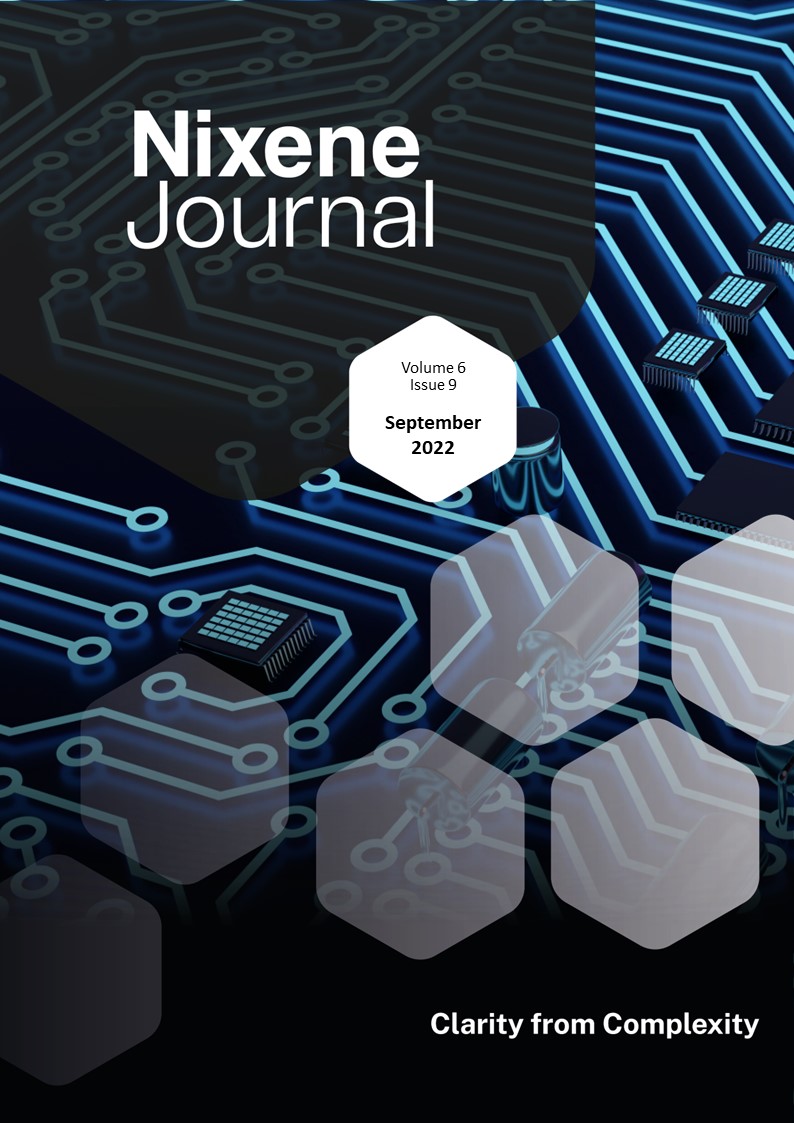
Vol 6 Issue 9
Andre Geim’s work appears twice in this issue. He has been working with researchers in China and developed a straightforward method of recovering metallic gold from e-waste. This starts with an e-waste liquid stream where the precious metals have been dissolved in acid. Reduced graphene oxide powder (rGO) is mixed with this waste stream. rGO is composed of nanoplates with oxygen containing groups around the edges and a graphene surface in the middle. The groups round the edge help the nanoplate mix with the water in the waste and the graphene surface attracts and reduces the gold ions in solution to solid gold metal. It is surprisingly straightforward. The process is also extremely efficient, recovering nearly 100% of the gold even when vanishingly small amounts of gold is present. Andre was also interviewed by Forbes magazine this month. He was asked how he manages to be so innovative when others are less so. He replied that having a wide range of interests was a key part of his success: “Too many people move from scientific cradle to scientific coffin without deviation” …and went on to say: “You have to enrich yourself, to improve your chances to find something new and interesting that other people didn't find before” Not only a recipe for success in science but a good philosophy for making our own luck for the rest of us too. Elsewhere in this issue, articles cover topics such as the renewed investor interest in graphene companies. Over £11million has been invested in graphene companies this month. Researchers have turned graphene into diamond, and others have been discovering more about the electrical properties of twisted layer graphene. In Malaysia, the traditional industry of natural rubber harvesting is exploring creating high altitude balloons made with graphene enhanced rubber to launch satellites into low earth orbit. Quite a leap forward. Read on and enrich yourselves… Adrian Nixon 1st September 2022£45.00 View product -
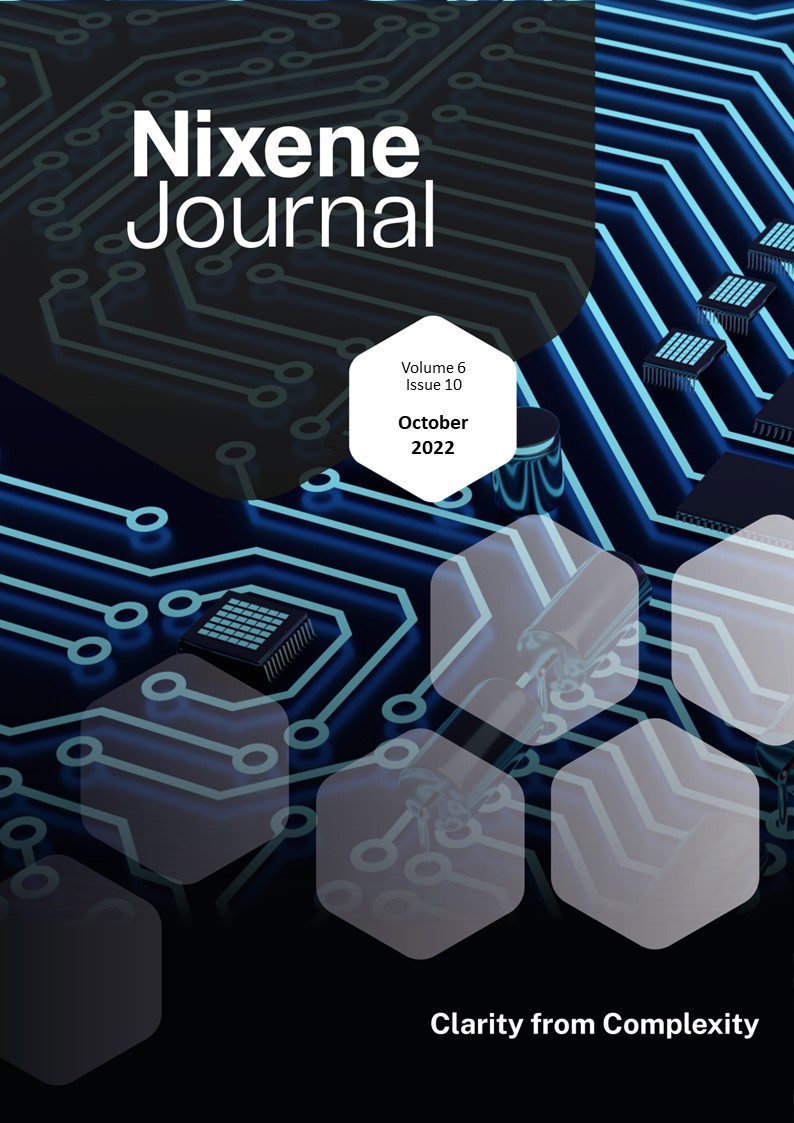
Vol 6 Issue 10
Dear reader, you will know that we are tracking the progress of the biggest graphene companies in the world. Levidian is the biggest on paper with their announced £700 million ($780 m USD) contract with the UAE (vol 6 iss 6 p.26). The other company is Skeleton Technologies who make graphene enhanced supercapacitors for transport systems. They have been making steady progress over the past few years and have now announced a new €220 million ($215 m USD) super factory that will open in Germany in 2024. This will give the company an order of magnitude increase in production capacity (p.32 of this issue). Skeleton have also announced they have been awarded the contract to supply supercapacitors for the latest metro units in the Spanish city of Grenada (p.22). Further industrial progress is being made in the USA. Cardea Bio is a manufacturer of graphene field effect transistor biosensors. Essentially these are lab-on-a-chip devices that will give an instant read out of medical conditions from a sample of body fluids. The company has mastered the art of mass production and its factories can produce up to 20,000 graphene sensors per month. They also report that next year they will have produced their millionth biosensor. This company is shaping up to be a formidable presence in the graphene biosensor market. On the research and technical side, there has been much progress in the quality control of graphene. Terrance Barkan convened a webinar of metrology experts from world class institutions in the UK, USA and South America. The Raman spectroscopy masterclass is well worth viewing if you need to understand how the quality of graphene is measured by this technique and its limitations (p.15). By coincidence this month researchers in India have developed a new technique for reliably measuring the number of layers of graphene in a sample. Rather than use an expensive raman spectrometer, they have found a much cheaper optical microscope can provide similar information (p.17). In the UK, researchers have published a literature review of sustainable fibres for polymer composites. The work clearly shows why sustainable natural fibres are not being adopted to replace synthetic fibres. Natural fibres are an order of magnitude weaker than their synthetic counterparts. There is room for optimism though. The study shows that graphene can enhance the strength of natural fibres in polymer composites and shows there is one primary candidate natural fibre that, with graphene, just might challenge the supremacy of synthetic fibres (p.18). You can find out about this and much more in this fascinating issue. Dear reader, I invite you to read on… Adrian Nixon 1st October 2022£45.00 View product -
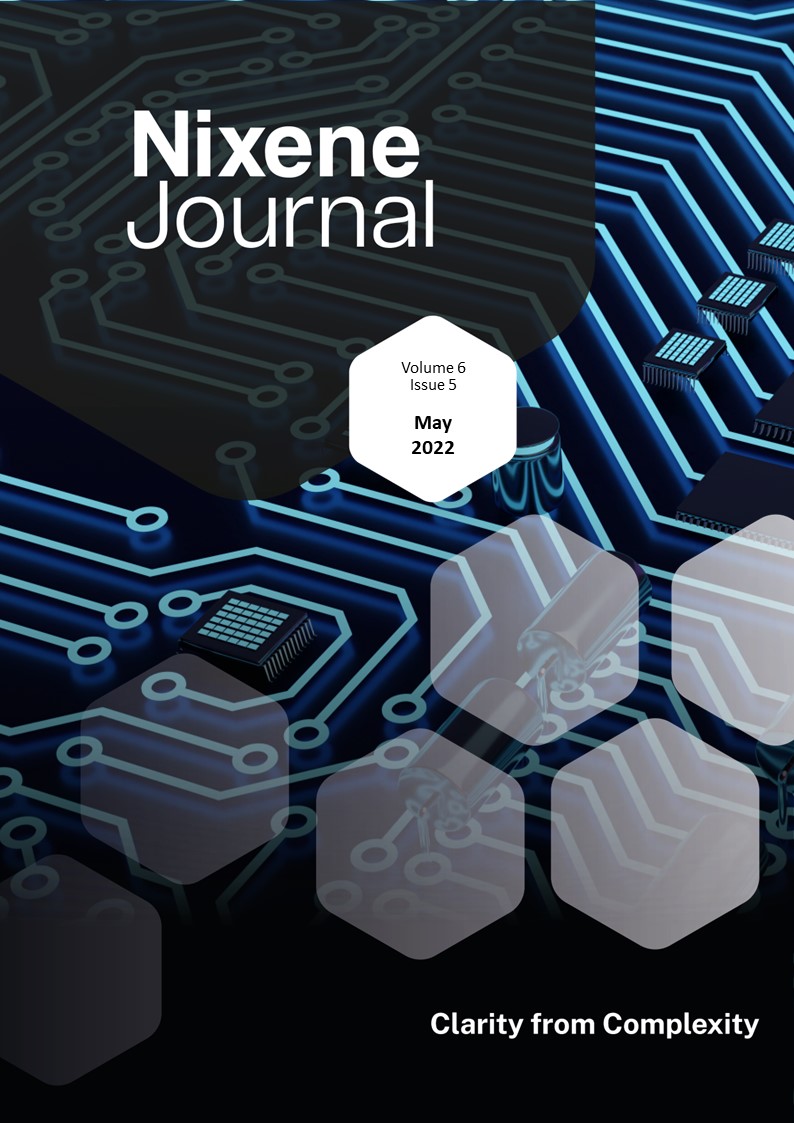
Vol 6 Issue 5
Over the past five years, we have been paying attention to how graphene can improve battery technology. The market focus has been on batteries for electric vehicles. Graphene has been used in the electrodes, and this has made improvements in charging time and battery life. However, energy density has not been improved. Energy density is the amount of energy that can be squeezed into a given volume or mass. This is important for electric vehicles because the higher the energy density, the further a vehicle can travel for a given quantity of batteries. MIT have been paying attention to this battery development dynamic. A spin out company from the university called PolyJoule has developed a new battery (p. 21). This has even poorer energy density, one fifth that of lithium-ion technology, so this is not going to be used for electric vehicles. The MIT researchers have spotted another market – grid storage. These new batteries appear to be ideal for grid storage applications. They charge and discharge rapidly have a long battery life, do not require cooling, and do not need lithium and toxic heavy metals. These batteries are a new intermediate-type between lithium ion and lead-acid technology. We will pay closer attention to this company in the future because storing electricity from renewables such as wind and solar power requires effective grid storage batteries. Also in this issue, Debbie interviewed the CEO of Ceylon Graphene Technologies. This company has local access to some of the highest quality graphite in the world and is very well equipped to process and develop this into high quality graphene powders (p. 7). The company is actively working on new products and extending the value chain towards the market applications. It will be fascinating to see the results of this activity in the market in the coming years. Yet more fascinating research is being published. You may recall that Debbie met Chris Griggs and Sarah Grace Zetterholm of the US Army ERDC (Vol 5 iss 12, p.10). Their team has developed a graphene filter that removes the toxin produced by algal blooms. This filter cleans up poisoned water that is harmful to humans and fish(p.13) Staying with the biology theme, researchers in the Netherlands have developed a graphene sensor that can listen to the sounds made by individual bacteria. This sensor could find uses exploring the effectiveness of antibiotics with unprecedented precision. Another team in the Netherlands has been developing graphene sensors for testing in space. SpaceX launched these sensors this month. The sensors are now approaching a sun synchronous orbit where their performance will be evaluated. Graphene really is out of this world, and as usual there is so much more to read in this issue. Adrian Nixon, 1st May 2022£45.00 View product

